BETWEEN ONE FAITH AND ANOTHER
Engaging Conversations on the Worlds Great Religions

P E T E R K R E E F T
InterVarsity Press
P.O. Box 1400, Downers Grove, IL 60515-1426
ivpress.com
2017 by Peter J. Kreeft
All rights reserved. No part of this book may be reproduced in any form without written permission from InterVarsity Press.
InterVarsity Press is the book-publishing division of InterVarsity Christian Fellowship/USA, a movement of students and faculty active on campus at hundreds of universities, colleges, and schools of nursing in the United States of America, and a member movement of the International Fellowship of Evangelical Students. For information about local and regional activities, visit intervarsity.org.
Scripture quotations, unless otherwise noted, are from the New Revised Standard Version of the Bible, copyright 1989 by the Division of Christian Education of the National Council of the Churches of Christ in the USA. Used by permission. All rights reserved.
While any stories in this book are true, some names and identifying information may have been changed to protect the privacy of individuals.
Cover design: Faceout Studio
Interior design: Daniel van Loon
Image: Lubushka/Thinkstock
ISBN 978-0-8308-4510-1 (print)
ISBN 978-0-8308-9084-2 (digital)
This digital document has been produced by Nord Compo.
INTRODUCTION
T his book is about the second greatest conversation in the world.
The greatest conversation in the world is the conversation between ourselves and God. The name for that is religion. It means relationship. The English word religion comes from the Latin word religare, which means, literally, a binding-back relationship.
The second greatest conversation in the world is the conversation among the different religionsthat is, the different human conversationalists in the first and greatest conversation. The name for that is comparative religions.
The first conversation is vertical. All religions converse with someone or something greater than ourselves. The second conversation is horizontal. One of the issues in that conversation is whether one religion is greater or truer or better than another. Are the different religions in the world incompatible or compatible?
There are three possible answers to this question. These answers are called by philosophers of religion exclusivism, inclusivism, and pluralism.
Exclusivists say that the religions of the world contradict each other, at least in some essential points, so that some religions must be untrue in some essential points.
Inclusivism says that deep down, perhaps at some mystical level, religions do not contradict each other. In fact that they are really one, like apparently different islands united underwater (mystically) as parts of the same undersea mountain, or different roads up the same mountain, converging at the top.
Pluralism says we cannot know which it is. It is skeptical of both of the other two positions and says that we can only know that the religions of the world are different, like lions and tigers, and not whether they are compatible and marriageable into a liger.
This book considers that question of comparative religions. It is also a very quick tour through the essential teachings of seven of the worlds great religions to gather enough data for the three characters (and the reader) to form a reasonable opinion or theory of comparative religions, a theory that judges the data. The questions in these dialogues are motivated by an attempt to find that unfashionable thing called truth.
Truth is ultimately what God thinks. All truth is Gods truth (as Wheaton Colleges Arthur Holmes famously said). So our attempts to find truth are ultimately attempts to read Gods mind. Regarding the world, sometimes reading Gods mind is easy (2+2=4) and sometimes harder (E=mc2), but it is hardest of all concerning religions. Clearly the religions of the world are different, playing and singing different musics. The question of comparative religions is hardest of all because it is the question of how these different musics sound to God. Are they in harmony? Does one carry the lead? Are they in cacophony?
Spoiler alert: we are not God, therefore we will not find the final answer to the question of how the different religions sound to God. At least not in this life. So it is a wild goose chase. We will not catch the goose. But a wild goose chase is a very good thing to do anyway. And along the way we may find some very important answers to questions that are only a little bit less ambitious.
Dramatis Personae
Here are the characters in my little drama and their different methods of approach.
Thomas Keptic, a hard-headed, logical, nonreligious exclusivist who uses the scientific method, treating ideas as false until proven true rather than vice versa. He uses the light of logic in a sincere search for truth, like an explorer of new continents.
Bea (Bee) Lever, an open-hearted, intuitive, religious inclusivist who uses the unscientific and personal method of treating religions as true until proven false. Like a bee, she is engaged in making honey from nectar gathered from many flowers.
Professor Fesser, a neutral, scholarly, objective pluralist who uses the aesthetic or artistic method of listening to and looking at each different religious datum carefully before pronouncing on its value, truth, or compatibility with the rest of the data, like a listener at a symphony or a visitor to an art museum.
The three isms mean something different in this contextthe study of comparative religionsthan they do elsewhere. For instance, pluralism does not necessarily mean that a society with a plurality of different religions is inevitable or socially and politically preferable. Exclusivism does not necessarily mean that those who do not believe the one and only religion that is totally true cannot be saved. And inclusivism does not necessarily mean that religions are all the same, that there are no important differences. Pluralism claims that we do not know whether or not the religions of the world contradict each other. Exclusivism claims that they do. Inclusivism claims that they dont.
A Personal Note on Where Im Coming From
This is a work of imaginative exploration, not apologetics. My own position does not exactly coincide with any one of these three characters, though I have deep sympathies for all three.
Thomas is an atheist, or at least a skeptical agnostic, and a rather negative and cynical one. I made my exclusivist character an atheist simply because atheists tend to be hard-headed, scientific, logical, and critical, not because all atheists are exclusivists (theyre not) or because all exclusivists are atheists (theyre not). In fact, most exclusivists are believers and most believers are or at least have been exclusivists. Most of the great theologians, saints, and religious philosophers of the past were exclusivists.
I made Bea an inclusivist not because all believers are inclusivists (theyre not, though some are) but to show a triple difference between her and Thomas: heart versus head, believer versus unbeliever, and inclusivist versus exclusivist. No one of these three differences logically necessitates any of the other two. Bea can at times be naive, fuzzy thinking, and so open-minded that her brains seem to spill out; but she can also be very perceptive and profound. As Thomas is a logical, left-brain thinker, Bea is an intuitive, right-brain thinker.

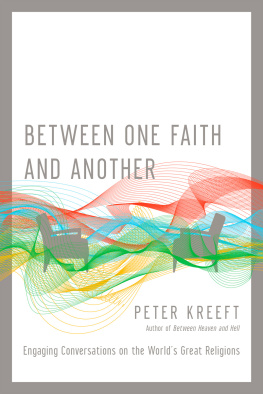
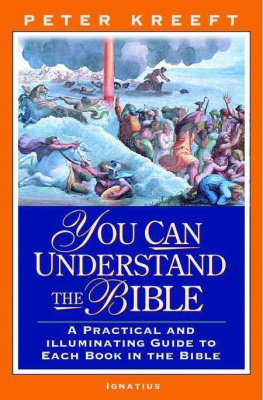



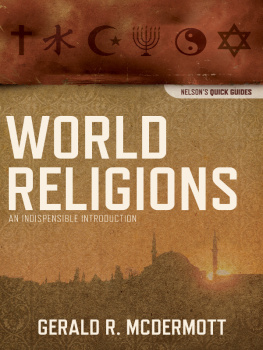

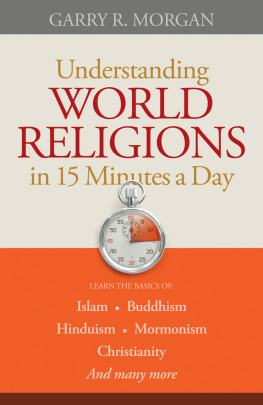

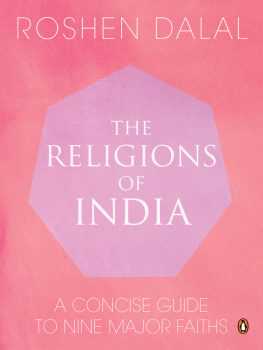

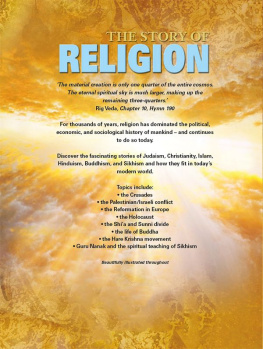
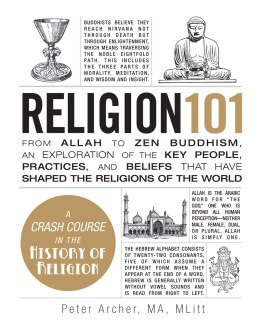

 P E T E R K R E E F T
P E T E R K R E E F T